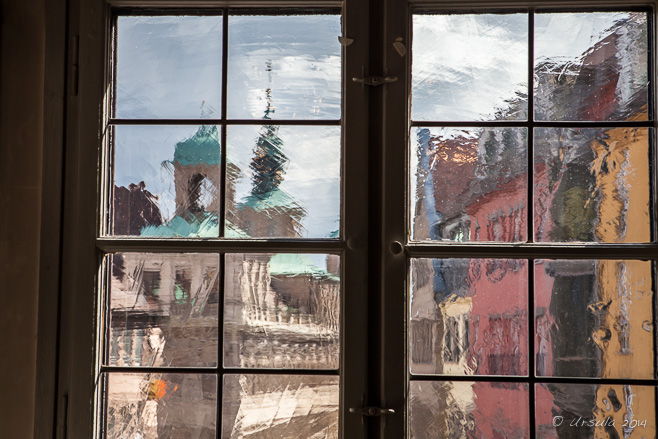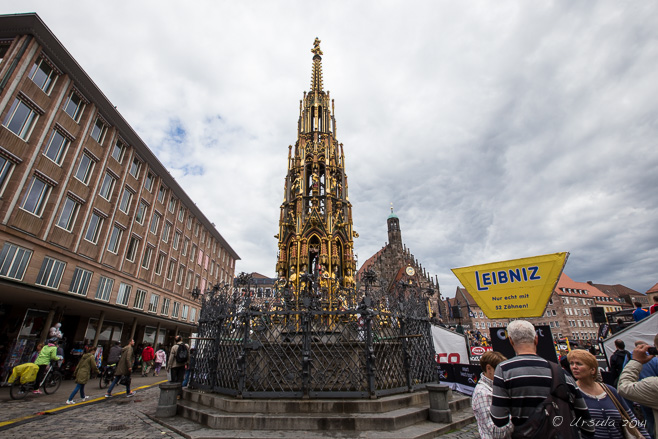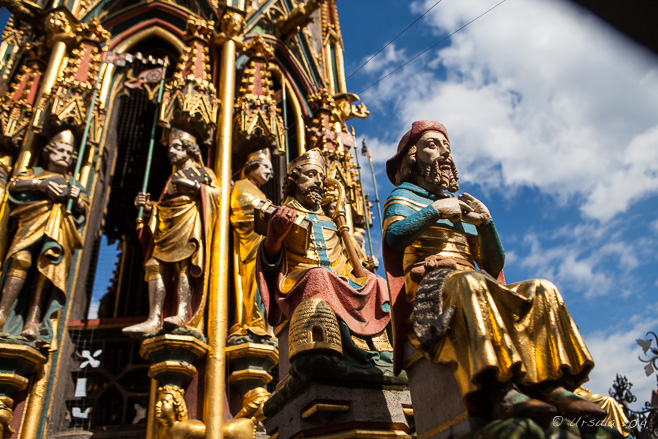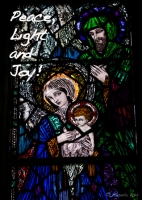
Through the Glass
A pleasantly distorted view of the roofs of Nürnberg Altstadt from the City Museum Fembohaus, Nuremberg.
History is written by the victors.
So, how do the non-victors manage to tell their stories, especially to future generations who are looking back on conflicts with very different historical perspectives? How do descendants of those who were seen as perpetrators of crimes or atrocities reconcile themselves with their own histories? How do the future generations, who are often still seen as culpable – how do they move forward?
My strongest impression on my first trip to Germany, in the late 1970s, to visit my grandmother and other female relatives (all the men were dead and gone), was one of melancholy sadness. Today, most of that generation – the adults who survived World War II – is gone. How have their children and grandchildren come to terms with their ancestry?
Nuremberg, in the middle of Germany, has been at the centre of much of the political history of Europe. First established around 1050, by the early 1200s it was called the ‘unofficial capital’ of the Holy Roman Empire, because the Imperial Diet (Reichstag) and Courts met at Nuremberg Castle. In the 15th and 16th centuries, it was a centre of the German Renaissance, adopting Protestantism during the Reformation in 1525. More recently, of course, it was home to many Nazi rallies before World War II, and to the famous Nuremberg Trials afterwards.
Last month, my husband and I spent a couple of days in Nuremberg – just enough time to get a brief glimpse of a diverse city with a long and rich history.

Schöner Brunnen
When our bus driver kept making references to the “Beautiful Fountain” in the centre of the old city, we thought he was being overly-flowery in his descriptives. We didn’t realise that that was its name! Built between 1385 to 1396, the 19-metre high fountain is modelled on a Gothic spire.

Representatives of the Holy Roman Empire
The colourful figures around the fountain would have been recognised by the faithful in the 14th-century as representing the prophets and other Roman Catholic worthies.

Brass Ring
Legend has it that an apprentice goldsmith, in love with the master goldsmith’s daughter, embedded two brass rings into the iron fence around the fountain without leaving any seams to prove his worthiness.

Wishing on the Brass Ring
Today, if you spin one of the rings three times clockwise, you will get your wish.

The Frauenkirche
The Gothic “Church of Our Lady” was built between 1352 and 1362.

Frauenkirche Madonna
Many heavily restored sculptures from the middle ages adorn the inside of the church.

Remembrance Candles
In contrast with most of the interior, the wall with niches for placing lit candles is quite modern…

Frauenkirche Organ
… as is the beautiful pipe organ built of blond wood and shining steel.

Gänsemännchen
The “Little Goose-Man” is another famous Nuremberg fountain.

Nürnberg Rathaus
The Nuremberg coat of arms are represented in the complex sculptures over the doors of the old city hall.

Diorama
We spent some time in the City Museum Fembohaus, a museum in a preserved late-Renaissance house belonging to a prominent merchant’s family.

Diorama Visitors
Models provided an overview of the ancient city.

Lock
Glass cases display works for which local craftsmen were well-known.

Hall
Beautiful rooms, ornately decorated with carved timber walls, inlaid floors and elaborate Baroque stucco ceilings, provide a glimpse into the lives of the rich.

Kitchen
Other rooms illustrate the inner workings of the house…

Through the Window
… and the lead windows give a view over the city.

Sebalduskirche
St. Sebaldus Church, built from 1225, became Lutheran after the Reformation.

Nürnberg Courts
From a bus window, we catch a glimpse of the imposing building which held the famous trials of Nazis after the war. (iPhone5)

Nazi Party Rally Grounds
Our first stop off the bus is at the huge Nazi Party Rally Grounds…

Ralf
… where our guide gives us some background and insight into the venue and its importance.

Nürnberger Burg
Our next stop is Nuremberg Castle, built high on a sandstone rock at the north of the old walled city.

Castle Walls
Predominantly renovated after World War II, the thick castle walls are part of what was considered one of Europe’s most formidable medieval fortifications.

Sinwellturm
The modern German flag flies over old Sinwell Tower, one of the few parts of the castle to remain intact after the bombings.

Nürnberg Altstadt
We get a nice view of the old city from the castle.

The Old and the Not-So-Old
Over ninety percent of Nuremberg was destroyed by Allied bombers; much of this damage was in only one hour. Fortunately for us today, the community decided to rebuild things “as they were”. One of the houses on the road back down to the old town is original; the others are replicas. It is impossible for the uninitiated to tell the difference.

Dürer’s Praying Hands
In front of a house where Albrecht Dürer once lived, Ralf reminds us of some of the most famous works by Germany’s most famous artist.

Nürnberg Roofs
The roofs of the city hall and other buildings greet us as we walk back to town-center…

Tourist Kitsch
… where my dreams of the famous Lebkuchen (gingerbread) are shattered! It is Sunday, and, except for the most garish of tourist shops, everything is shut.
On that visit to my family in 1979, my German wasn’t good enough to ask probing questions – not that it would have been appropriate – but occasionally anecdotes from the war years came up.
 It would seem that, like Liesel Meminger’s foster parents (The Book Thief), many ordinary people found small ways to be subversive.
It would seem that, like Liesel Meminger’s foster parents (The Book Thief), many ordinary people found small ways to be subversive.
And, it would seem from the stories Ralf told us of his family, there is a new understanding that history has to be acknowledged so that the healing can continue.
Pictures: 17-18August2014
































.png)
.png)


A great lead into the start of our European cruise
[…] luxurious, floating hotel-rooms: a “Romantic Danube Cruise” from Nuremberg (see: Altered Views of History) to Budapest, and were docked in Regensburg, in the middle of […]
[…] were lucky: my husband and I were enjoying a seven day cruise along the Danube, starting in Nuremberg and stopping in Regensburg, Kelheim and Passau. We’d spent the morning exploring Melk […]
[…] the new boats that act as floating hotel rooms for tourists, travelling from Nuremberg (see: Altered views of History) to Budapest (see: Buda Castle Hill). With the exception of our cruise down the magnificent […]